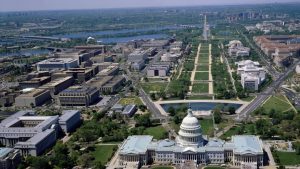Changing Identities
My National and Personal Identity
The Sports Culture

While American football is commonly thought to be the sport that binds our country together, college sports, especially basketball, perform the same function. Most people choose their “team” based off of where they went to college, or even graduate school. Families and friends will often gather to watch tough games, even if they support opposing teams. In this way, college sports bring us together amidst the competition.
Connections to Multinational Organizations
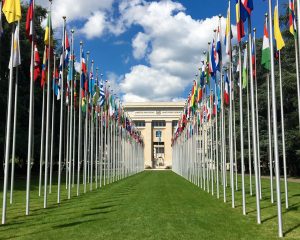
One of things I have most admired about where I live is how we belong to many different multinational organizations, such as the United Nations and the International Energy Forum. Our participation in these groups highlights our efforts to be human and connect with people from other countries, not just our own, as well as our goals to strive to better our entire world.
Our Constitution
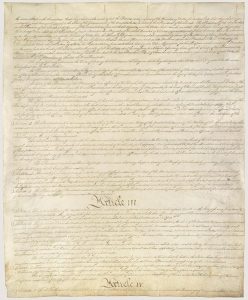
The Constitution, ratified in 1788, just 12 years after the United States declared its independence from Britain, outlines the rights of the citizens and the laws of the land. Although some aspects are outdated and must be read figuratively rather than literally, this document shows how the United States was built on a set of ideals, and how we have given our best attempt to do so since the day it was written.
Country Music

Of the many types of music that are unique to the United States, country music is one of the most distinctive. Although it is a highly divisive topic between the country music lovers and haters, it is often seen as a symbol of the entire southern region of the country. The themes covered in the lyrics often refer to the American dream, hard work, and the importance of family and love, which is why this genre of music is a good representer for the identity of most Americans.
Washington, D.C.
Washington, D.C. is one of the most populous cities in the country, placed centrally along the east coast, where the heads of all three branches of government can be found. Besides the governmental buildings, the Smithsonian Institution maintains eleven museums, along with a national zoo and the national mall. Monuments that immortalize some of the most important leaders and change-makers of our country, such as Abraham Lincoln and Martin Luther King Jr., can also be seen scattered throughout the city.
The Right to Vote

While the Constitution guaranteed the citizens of the United States many freedoms, one of the most prized is the right to vote. Each year, people line up for the polls to vote for members of the legislative branch, including the House of Representatives and the Senate, to represent them and their state. Additionally, every four years, we are given the opportunity to vote for our head of the executive branch, our President.
National Celebrations

The Fourth of July, or Independence Day, is one of the biggest celebrations of the entire year in the United States. It usually involves firework shows, picnics, including hamburgers, hotdogs, and watermelon slices. Similar to how proud Americans are to exercise their right to vote, given to them in the Constitution, this day celebrates our declaration of freedom from the British and our birth as a new country.
The High School Experience

The United States guarantees free public education for all children through high school, or the twelfth grade, which is something that not all countries are able to provide for the citizens. Learning in this environment allows for the exploration of a wide array of subjects, participate in sports and arts groups, and for the making of friends.
Unique Cultural Fusion
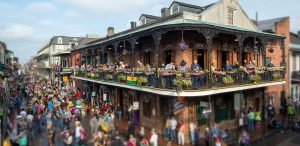
The people that comprise the United States come from all over bringing with them a variety of languages and traditions. One of the most famous and celebrated of these is Mardi Gras, or Fat Tuesday, which occurs right before the start of the Christian religious tradition of Lent. Mardi Gras was first celebrated in France and has medieval origins, and is only one of the originally foreign traditions that has become popular in the United States.
NASA and the Moon Landings

One of NASA’s space center’s, the Kennedy Space Center, is located in Florida near Cape Canaveral, and allows for visitors to come and learn about the technology that has been used to reach the moon and gather information about our solar system and the rest of the universe. NASA is a good example for how exploration and education are a priority.
The National Park System
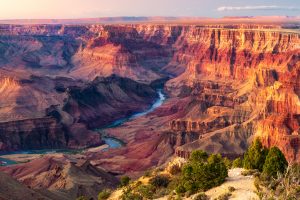
The National Park System is made up of over 422 national park sites, which could be anything from national parks, monuments, or historical sites. This agency is dedicated to protecting the natural and cultural resources provided by these areas for future generations to experience as well. Some of the most famous, such as Yellowstone or the Grand Canyon, have become natural symbols of the United States.
“American” Food

Burgers and fries are thought to be the most common American food, but much of the food that is most commonly eaten is derived or adapted from other countries or cultures. This applies to pizza and pasta, which are from Italy, tacos, which are adapted from traditional Mexican foods, and noodle and rice dishes, which come from all over Asia, making the cuisine of American an accurate depiction of the people who live there.
The Egyptian National Identity
The Arabic Language

Arabic has been used for over a thousand years, and in that time has influenced many other languages, including Turkish, Hindu, and Kurdish. It is the liturgical language for Muslims, which is important for Egypt, as a vast majority of its residents practice Islam. The Qur’an, the holy book of Islam, is written in Arabic.
The Book of the Dead
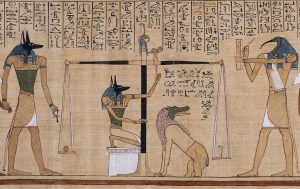
The Book of the Dead is an ancient Egyptian text made up of spells that describe and prepare a person for their passage into the afterlife, which was on of the keystone beliefs of the ancient Egyptian’s religion. When they first began being used, they were only available for the scribes and pharaohs, but they eventually began to be commercially sold, and even able to customized for the person purchasing it. In the image above, the heart of the deceased is weighed against a feather to measure their pureness and determine if they should be allowed passage to the much-coveted afterlife.
Cleopatra
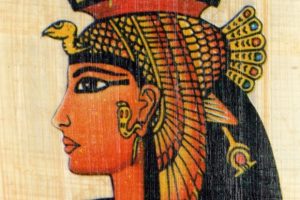
Cleopatra has come to be known as one of the most famous female leaders of all time. She was the last ruler of the Ptolemaic Kingdom in Egypt and wisdom and cunning is often understated when it comes to her connections with Mark Antony and Julius Caesar, specifically in the Battle of Actium. She is remarked as a prototype for the characteristic romantic femme fatale.
Hieroglyphics

Hieroglyphics were the formal writing system used in ancient Egypt, and one of the first systems of writing ever created. Some are symbols, while others are more literal pictures. They can be found on papyrus writings, such as the Book of the Dead, tomb inscriptions, and even some statues.
The Library of Alexandria

Established around 285 BCE, the Library of Alexandria was one of the largest and most magnificent libraries in the world. After its creation by Ptolemy I, the library housed between 200,000 and 700,000 books on poetry, law, rhetoric, and the natural sciences, among other subjects. Unfortunately, the building burned down in 48 BCE during Julius Caesar’s civil war. Although parts of its collection was salvaged, much was lost.
Islam and Architecture
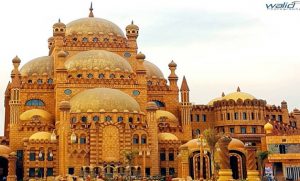
Islam is the most commonly practiced religion in Egypt, and is the world’s second largest religion, with over 1.8 billions followers. The religion involves the practicing of the Prophet Muhammad’s teachings, as well as prayer rituals and a hajj, or pilgrimage. Mosque’s are a common place for muslims to perform their prayer rituals, and some, like that in the image above, have minarets. These minarets are the tall towers with a balcony where the muslims would be called in to worship.
Muhammad Ali Pasha
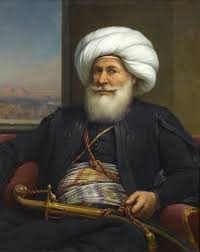
Muhammad Ali Pasha was born in Greece in 1769 and was the leader of Egypt from 1805 to 1848, and is widely recognized as the founder of modern Egypt. He administered many reforms in the military, economic, and cultural spheres and was able to consolidate his rule so much that his power threatened that of the Ottoman Sultan.
The Nile River
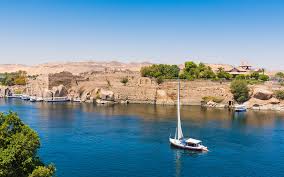
The Nile River flows northward through Egypt, emptying into the Mediterranean Sea. More than 4,000 miles long, this river is said to be the life-line of Egypt. Once a year, the river floods, soaking the fields on the edge of its banks, allowing for crops to grow for the rest of the year. This was vital to the survival of the ancient Egyptians, as the options for continued irrigation were slim.
The Rise and Fall of the Ottoman Empire
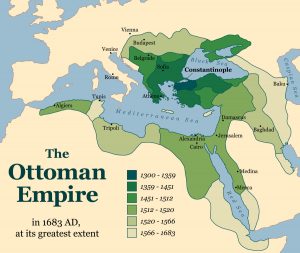
In 1453, Constantinople fell after being invaded and the Byzantine Era ended. The conquerors renamed the city Istanbul and began building the Ottoman Empire, which is shown above. After lasting for several hundred years, wars caused the power of the Empire to lessen, and eventually completely fell apart after the conclusion of the First World War.
The Pyramids of Giza

The Pyramids of Giza were constructed during Egypt’s 4th dynasty, over four thousand years ago. Their purpose is funerary, as the house the remains of deceased pharaohs. As they were built so long ago, the only machinery used during their construction was a pulley system that allowed for the heavy clay blocks to be hoisted up the pyramids by the workers. Today, they are one of the most well-known symbols of Egypt, as well as one of the Seven Wonders of the World.
The Suez Canal
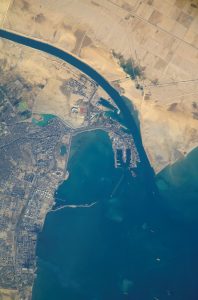
Artificially created in 1859, the Suez Canal allows passage between the Mediterranean Sea and the Red Sea, where ships would have previously has to sail around the entirety of Africa. It was owned and operated by both the French and the British, before it was nationalized by the Egyptian’s in 1956. This resulted in the Suez Canal Crisis and led to Egypt being occupied by Israeli forces.
King Tutankhamun
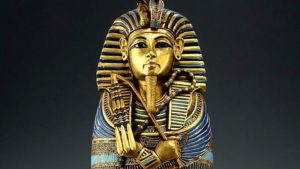
Tutankhamun, also known as King Tut, was a pharaoh during ancient Egypt’s New Kingdom period, and was the last ruler of the 18th dynasty. His rule was relatively short, as he died at the young of nineteen. However, his fame is widespread, as his untouched tomb, filled with valuable artifacts and treasures, as well as his notable gold funerary mask, was recently discovered by Howard Carter in 1922. As a result, King Tut and his tomb piqued the interest of many in ancient Egypt and have since become a powerful symbol.
